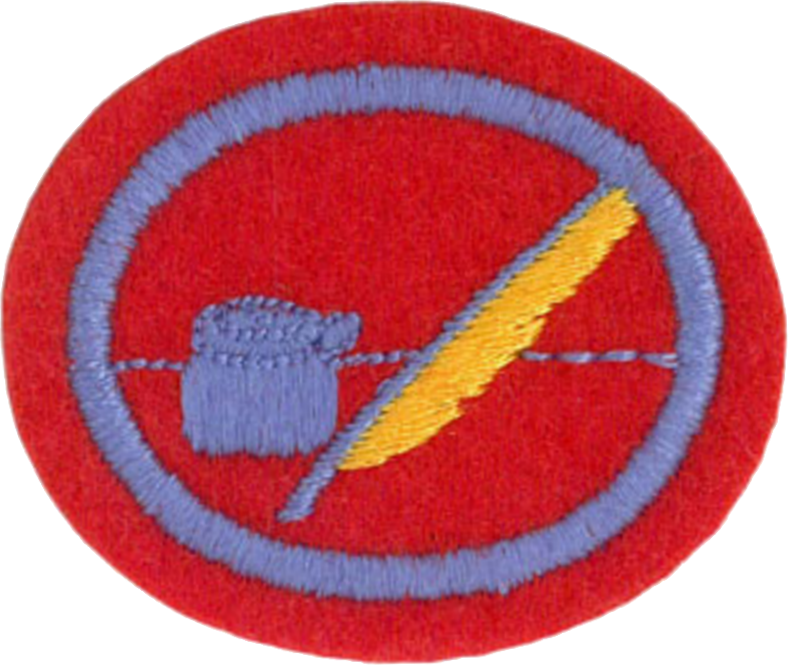Difference between revisions of "AY Honors/Journalism/Answer Key/es"
(Created page with "Especialidades JA/Periodismo/Respuestas") |
(Created page with "</noinclude> <!-- 1. Describir los elementos de un buen párrafo de entradilla y el uso y la importancia de los titulares. -->") |
||
| Line 44: | Line 44: | ||
</div> | </div> | ||
| − | + | {{clear}} | |
| − | |||
| − | |||
| − | |||
<div lang="en" dir="ltr" class="mw-content-ltr"> | <div lang="en" dir="ltr" class="mw-content-ltr"> | ||
Revision as of 20:32, 18 May 2021
1
2
Any of these topics should lend itself equally well to a news or feature story. Because requirement 6 is suited to a feature story, however, Pathfinders who want to get experience with a variety of journalistic writing styles should write a news story to fulfill this requirement.
3
A journalist must, first and foremost, understand the subject they write a story about. The journalist must also understand their audience so they can decide what information to convey to that audience throughout the course of their story. The story's lead should convince the audience to read the entire story. Each paragraph in the story should build on information that preceded it and should also convince the reader to continue reading. Once the story has conveyed all of the information of relevance, it should end. This method of organizing a story is called the Inverted Pyramid.
For feature stories, especially literary non-fiction, journalists have more latitude to use descriptive and colorful language for the purpose of leaving the reader with a vivid picture and to help maintain their interest in the story. Journalists must take care not to alter or misrepresent facts, however.
Regardless of the kind of story, a journalist must write the story using the correct and consistent style. Which style is 'correct' is determined by the publication the journalist writes the story for, and publications of any appreciable size will formally define their style. In North American news writing, the Associated Press, or AP, style is widely used and many newspapers either use it unchanged, or use it as the basis of their style. AP style is frequently updated and is published as the book The Associated Press Stylebook and Libel Manual. A publication that hires a journalist on a staff will provide the style guide. Journalists who contact a publication about submitting a freelance story should specifically inquire about the style guide.
A style guide addresses grammar, spelling, and word usage, particularly for cases that have confused their journalists in the past. The style guide should identify the publication's audience, as well, so that the journalist knows what kinds of information need to be included in the story and what does not. The AP manual also identifies reference resources that its writers are to rely in as sources of facts about particular kinds of information. For example, it says which dictionary to use for spelling, except for those cases where the AP style guide overrides that dictionary.
4
In grammar, the voice (also called gender or diathesis) of a verb describes the relationship between the action (or state) that the verb expresses and the participants identified by its arguments (subject, object, etc.). When the subject is the agent or actor of the verb, the verb is in the active voice. When the subject is the patient, target or undergoer of the action, it is said to be in the passive voice.
For example, in the sentence:
- The cat ate the mouse.
the verb "ate" is in the active voice, but in the sentence:
- The mouse was eaten by the cat.
the verbal phrase "was eaten" is passive.
In a transformation from an active-voice clause to an equivalent passive-voice construction, the subject and the direct object switch grammatical roles. The direct object gets promoted to subject, and the subject demoted to an (optional) complement. In the examples above, the mouse serves as the direct object in the active-voice version, but becomes the subject in the passive version. The subject of the active-voice version, the cat, becomes part of a prepositional phrase in the passive version of the sentence, and could be left out entirely.
Active verbs are generally preferred to passive verbs. One clue for determining if a sentence is active or passive is the presence of a 'to-be verb (such as is, was, were, are, be). If one is found, the sentence is likely to be passive. To change a sentence from passive to active, figure out who or what is performing the action specified by the verb, and see if you can rearrange the sentence to make the "actor" the subject.
Examples
The Pathfinder is encouraged to come up with his own examples, but we provide a few for inspiration:
| Passive Voice | Active Voice |
|---|---|
| The Journalism honor was earned by Johnny. | Johnny earned the Journalism honor. |
| Our campfire was built by the Companion class. | The Companion class built our club's campfire. |
| The Explorers were taught Knot Tying by the Guides. | The Guides taught Knot Tying to the Explorers. |
| Susan was rescued by the lifeguard. | The lifeguard rescued Susan. |
5
Story writing guidelines are available free from the following Seventh-day Adventist publishers:
- Pacific Press Publishing Association
- 1350 North Kings Road
- Nampa, ID 83687
- Phone: 208-465-2500
- Fax: 208-465-2531
- http://www.pacificpress.com/index.php?pgName=newsOLFPTsub
- Review and Herald Publishing Association
- 55 West Oak Ridge Drive
- Hagerstown, MD 21740
- http://www.reviewandherald.org/index.php/general/writers_guidelines.rhpa
With the advent of the web, most publishers post story writing guidelines on their website. Finding several of these webpages and studying them seems a reasonable update to this requirement.
6
- a. Cómo su familia aceptó primero a Cristo, explicando si fue usted, sus padres, sus abuelos, etc.
- b. Experiencias personales de respuestas a la oración o la orientación divina.
- c. Un animal doméstico interesante que haya tenido.
- d. Una experiencia que haya tenido, mientras estuvo en el campamento de verano o en un viaje de campamento.
- e. Cuando Dios llegó a ser realmente por primera vez su amigo y Salvador personal.
- f. La cosa más difícil de ser un cristiano hoy.
These ideas are almost exclusively suited for feature stories. Pathfinders who want to write a news story while obtaining this Honor should do so for requirement 3, instead.
7
When a Pathfinder considers which publication to write a story for, he or she should keep in mind that Seventh-day Adventist publications exist at all levels within the global church, and for a variety of audiences -- including non-Adventists. Seventh-day Adventist print publications tend to be printed in magazine format, even if they are actually bi-weekly or monthly newspapers.
Take North America, for example. The General Conference publishes the Adventist Review and Adventist World. Various North American Division unions publish magazines, e.g. Atlantic Union Conference's The Gleaner or Southern Union Conference's Southern Tidings. Individual Adventist institutions often produce their own publications as well. For example, several academies in the Columbia Union Conference write newsletters that cover major events at their school; while those schools frequently published and circulated these newsletters in the past, they are now included in the Union's publication, Visitor. Adventist academies and colleges generally have a student newspaper, and many churches also have newsletters, which contain information of interest to the local congregation. Some of these publications exist both online and in print, while others only get published in one medium.
Not all Seventh-day Adventist publications specifically target Seventh-day Adventists. The magazine Liberty, for instance, targets issues of religious freedom in the United States and is sent by the church to all members of Congress. Various healthcare organizations affiliated with the Seventh-day Adventist church may generate publications for readers in their area. The magazine Listen encourages children and young adults to live a drug- and alcohol-free life; it regularly features stories about non-Adventists, and focuses on an Adventist message without limiting its audience to Adventists.
8
This is now going to be an email as almost anything you write will be submitted electronically.
9
Those who want to pursue a career in the field of journalism from the time they enter the workforce are best served by studying the subject at the undergraduate level. Curricula for such college programs typically require that students take courses in mass media, communications theory, communications law, ethics, newswriting, feature writing, non-fiction writing, persuasive writing, desktop publishing, online publishing, statistics, computer-assisted reporting, and editing. Journalism degree requirements typically also include at least one practicum/internship. Schools that offer undergraduate degrees in the field of journalism frequently require the student to obtain a second major, e.g. a journalism student might also study business if they want to write for business media or religion if they want to write for religious media.
Within the Seventh-day Adventist educational system in North America, Andrews University, Pacific Union College, Southern Adventist University, Southwestern Adventist University, Union College (Lincoln, Nebr.), Walla Walla University and Washington Adventist University all offer an undergraduate degree either in journalism proper or in communications with a concentration/emphasis in journalism; most offer journalism as a minor area of study, as well. La Sierra University's Department of English and Communication offers some journalism courses -- but neither a degree nor a concentration in the subject. A multitude of public and private universities in North America offer similar courses and degrees.
Graduate degrees in journalism exist, though almost exclusively outside the Seventh-day Adventist education system. Many professional journalists do study journalism at the graduate level, and degrees are offered both at the masters and doctoral level.
A Pathfinder need not wait until college to begin testing the waters of the pool that is journalism, however: many high schools -- and some middle schools -- sponsor a student newspaper published on a weekly to monthly basis. And while locally-owned newspapers are much less common than they were a generation ago, some accept adolescent-written stories and articles; and many newspapers even publish a for-youth-by-youth section once or twice a week.
10
- beat writer/news writer
- broadcaster
- copyeditor/proofreader
- editor
- fact checker
- freelance author
- headline writer
- layout
- photojournalist
- publisher
- blogger
- internet publisher
References
- The Associated Press Stylebook and Libel Manual (Associated Press)
- Editing for Clear Communication (Thom Lieb)


